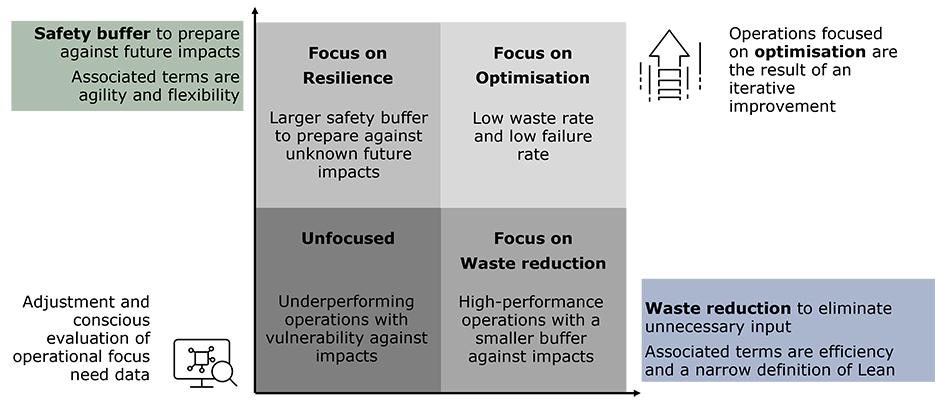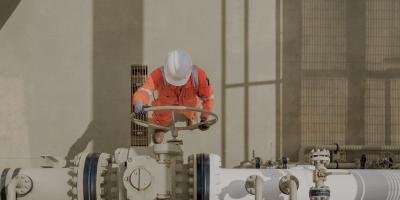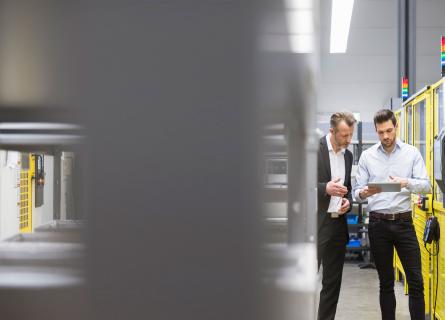
To avoid disruption and waste production, make your operations a strategic asset
To avoid disruption and waste production, make your operations a strategic asset
Efficient operations are the foundation for business success and allow for improved competitiveness.
Written by Stefan Kucher, Alexander Pohl, Jakob Redlinger-Pohn and William Isaksson
The setup of one’s operations is a strategic decision, imperative to the business's success, and not merely an execution exercise. The objective is to strive for a smoothly running process that is, on the one hand, resilient against impacts and, on the other hand, low on waste production. Despite both seeming adverse in nature, it is the combination of resilience and waste reduction that increases operational fitness and hence overall business success.
In business, resilience has become a more prominent concept since the Covid19 pandemic and the resulting supply-chain disruption. These macroeconomic changes spotlighted the importance of “preparedness to prevail” and awarded businesses and operations that adapted quickly. Continued impacts from economic changes on the operation increased the effort for “managing your business in uncertain times” and emphasised the need for resilience to avoid fire-fighting on a daily basis. However, a too-large focus on resilience bears the risk of overinvesting in buffers which add to waste but not to resilience.
Waste is defined in Lean manufacturing as any action that does not add value to the customer. In that sense, safety buffers are no waste as they add value to the customer by ensuring production process stability, fewer reworks, higher product quality and higher delivery reliability. Finding the right level of buffer, which adds safety but no waste, is a continuous improvement process which needs to adapt to the economic situation and expectations.
Fit operations are characterised by waste reduction efforts balanced with safety buffer considerations that are ongoingly evaluated towards optimisation
- Operations focused on optimisation continuously improve their standard to include an appropriate amount of safety buffer with a focus on predictable impacts on the operation but do not add waste
- Operations focused on resilience plan for more slack to prepare against unpredicted impacts, and therefore accept waste in the view of the current and predictable economic situation
- Operations focused on waste reduction achieve high performance by decreasing the preparation against predictable changes and thus miss resilience when impacts materialise
- Unfocused operations guard against unlikely impacts, adding waste to their processes which is no safety buffer against future impacts on the operation, and most likely suffer from missing process insights

The evaluation of the operations positioning in the space of safety buffer and waste reduction is retro perspective. The differentiation between safety buffer and waste is dependent on future events and subject to forecasting and anticipation. Given that the future remains uncertain, it is a strategic decision whether to emphasise the creation of safety buffers or the reduction of waste. In every case, an unfocused operation needs to be avoided as it is unsustainable and leads to profitability losses and the decline of the business. To stay on top, business leaders and operations managers need to adjust their actions to the best practices iteratively.
What needs to be considered for balancing resilience and waste reduction to optimise operations?
Going forward, one must be pragmatic. The implementation of new standards needs time to bear fruit and to materialise into better performance for the business. To optimise the operations, it is best to view the whole value chain rather than a department or unit of the operation. Examples of the aspects business leaders need to balance include:
- The number of suppliers and their distance to the facility, including means of transportation, as well as the production adaptability to variations in supply quality
- The number and type of products per production line and the flexibility to switch between them
- The balance of scheduled and unscheduled downtime of the operation processes and machinery
- The production speed and throughput versus time losses from production failure and avoidance of machine breaks
- The warehouse filling degree and use of space versus the mobility and safety in the warehouse as well as short-term buffer availability
Obviously, there are much more considerations than those examples here. AFRY consults with a focus on the individual operations setting. If you need help evaluating your safety buffer level and waste reduction potential, reach out to us.









